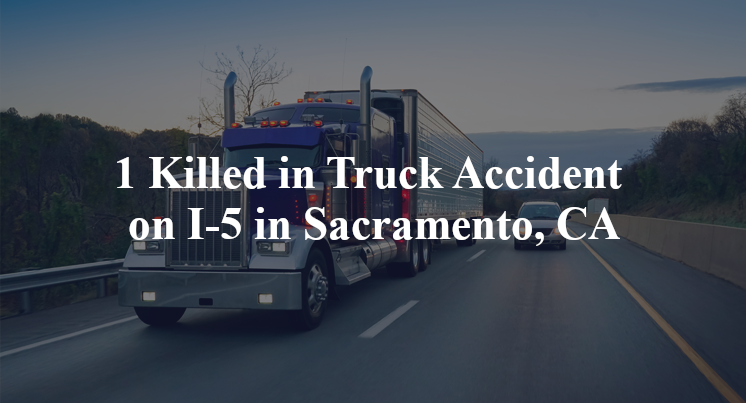1 Killed in Truck Accident on I-5 in Sacramento, CA
Sacramento, CA — September 13, 2025, one person was killed injured in a truck accident at about 7:15 a.m. on Interstate 5/West Side Freeway.
Authorities said a northbound semi-truck hauling two trailers collided with a disabled Toyota Tacoma north of Sutterville Road, causing both vehicles to catch fire. The pickup was stopped after it had lost a tire.

The Toyota driver, whose name has not been made public yet, died at the scene of the crash, according to authorities.
The truck driver suffered minor injuries, authorities said.
Authorities have not released any additional information about the crash at this time.
Commentary
When people hear that a semi-truck hit a disabled pickup on the freeway and both vehicles caught fire, they naturally want to know: How could this happen? And more importantly, was it avoidable? From what’s been reported so far, we know a semi-truck traveling northbound on I-5 struck a Toyota Tacoma that had apparently lost a tire and come to a stop. The pickup’s driver was killed. The truck driver suffered only minor injuries.
What we don’t know, and what matters most, is whether the truck driver had time and space to avoid the disabled pickup.
That question leads us straight into some critical but unanswered details. For instance:
- Was the pickup stopped in a live lane of traffic or fully off on the shoulder?
- Were hazard lights on? Was it still dark or foggy at that hour?
- Was the semi-truck driver distracted, fatigued or speeding?
- How long had the pickup been disabled before the crash?
Depending on those facts, the legal implications shift dramatically. If the pickup was in a lane and poorly visible, it might limit how much the truck driver could have done. On the other hand, if the truck driver had time to react and failed to take evasive action, that’s a different story.
This is where black box data becomes crucial. The truck’s ECM (engine control module) can show speed, braking, throttle position and more in the moments leading up to the crash. In-cab cameras, if the truck was equipped with them, could show whether the driver was alert, distracted or even looking down at a phone. Cell phone records can tell us whether the driver was texting or calling at the time of impact.
Another angle that often gets overlooked is the trucking company’s role. Was this driver properly vetted and trained? What kind of safety procedures are in place? I’ve handled cases where a company put a driver on the road despite a clear pattern of reckless driving or poor judgment. In one case, the driver had been fired multiple times before being hired again, with no meaningful evaluation beyond a 20-minute road test. That’s not diligence. It’s negligence.
There’s also the question of load and stopping distance. Trucks pulling two trailers, as this one was, take longer to stop than most people realize. That extra mass changes the math when it comes to reaction time and braking. If the driver was following too closely, or wasn’t paying attention, the trailers may have played a role in making the collision inevitable once the pickup came into view.
We don’t have all the answers yet, but one thing is clear: the only way to find them is through a proper investigation that goes far beyond what police reports and press releases can offer. That means obtaining electronic data, inspecting the scene, analyzing driver history and holding every responsible party to account, no matter who that turns out to be.
Key Takeaways:
- It's unclear whether the pickup was in a lane or on the shoulder, and that distinction is critical to understanding fault.
- ECM data, in-cab video and phone records are essential to determine whether the truck driver had time to react.
- The truck’s twin trailers may have affected its stopping distance, especially if the driver was following too closely or not paying attention.
- The trucking company’s hiring and training practices deserve scrutiny, especially in cases involving large or complex rigs.
- A thorough investigation, not just a police summary, is the only way to determine who should be held accountable.

“These are essential reads for anyone dealing with the aftermath of a truck wreck”– Attorney Cory Carlson